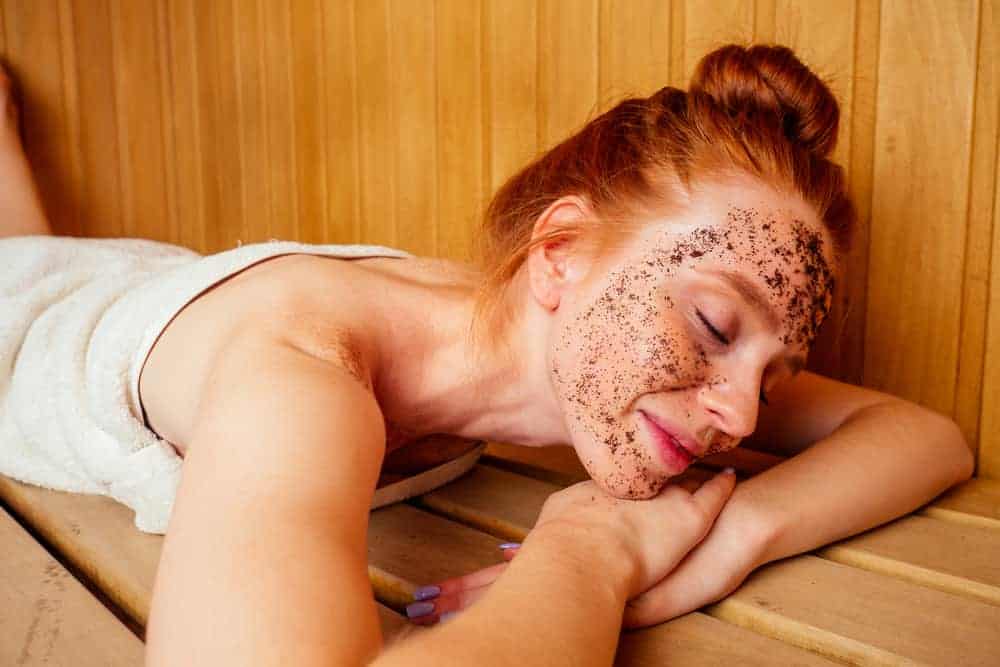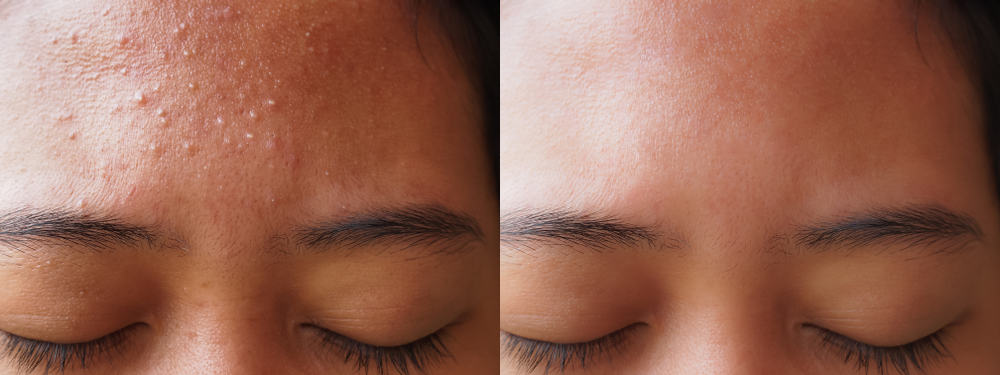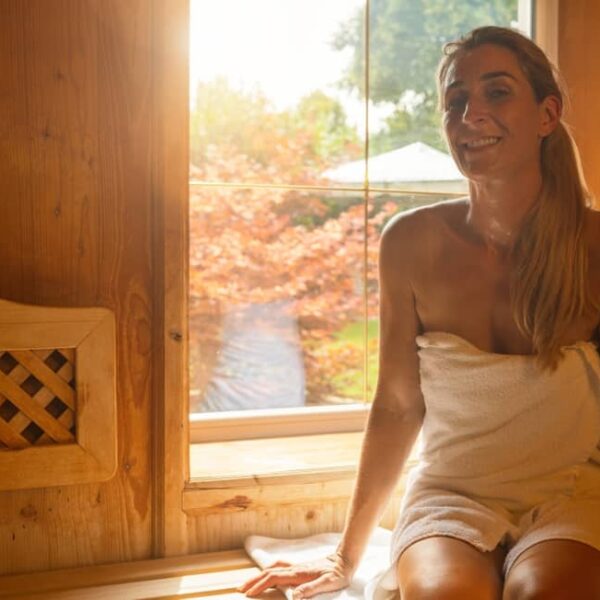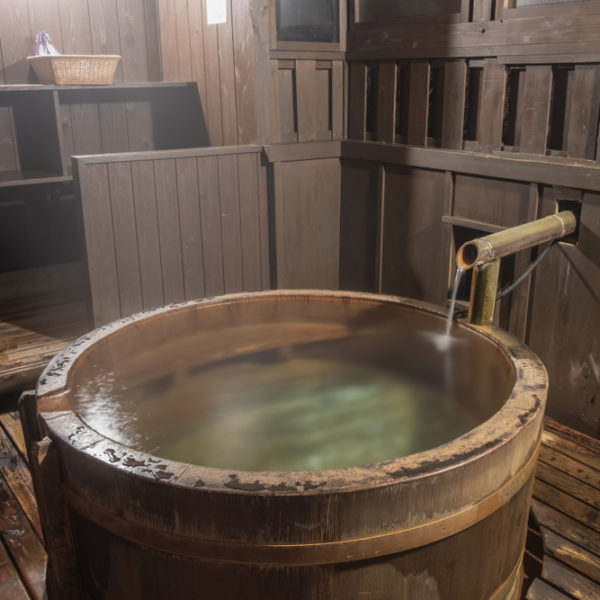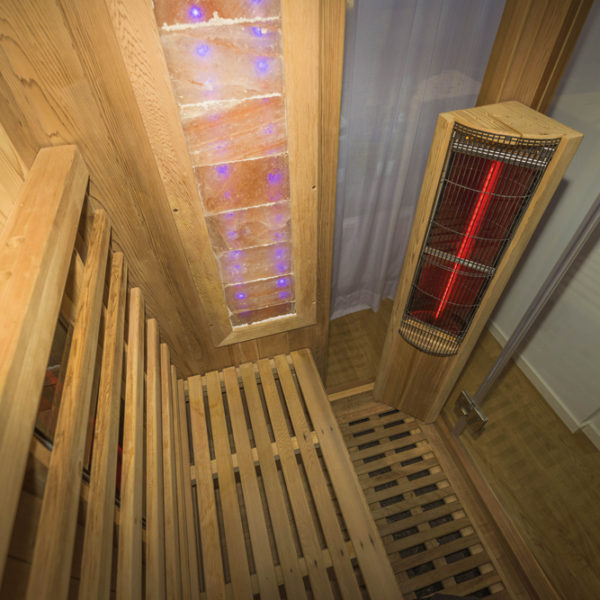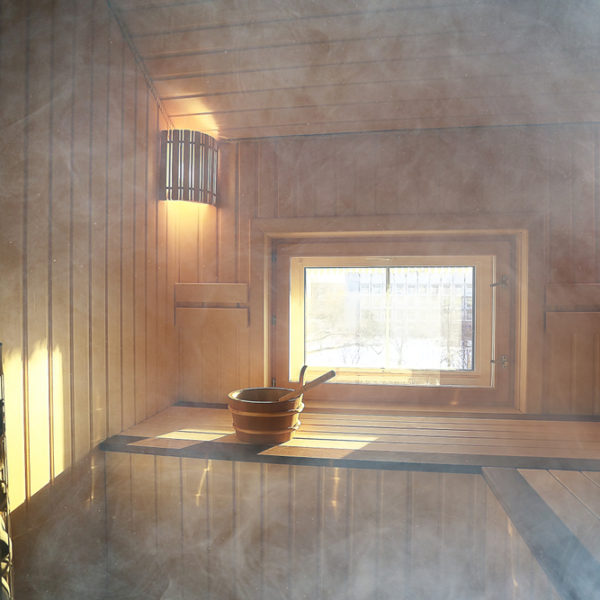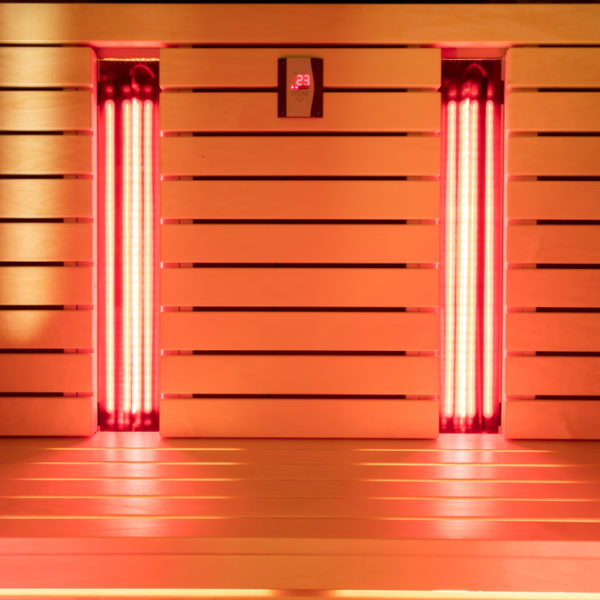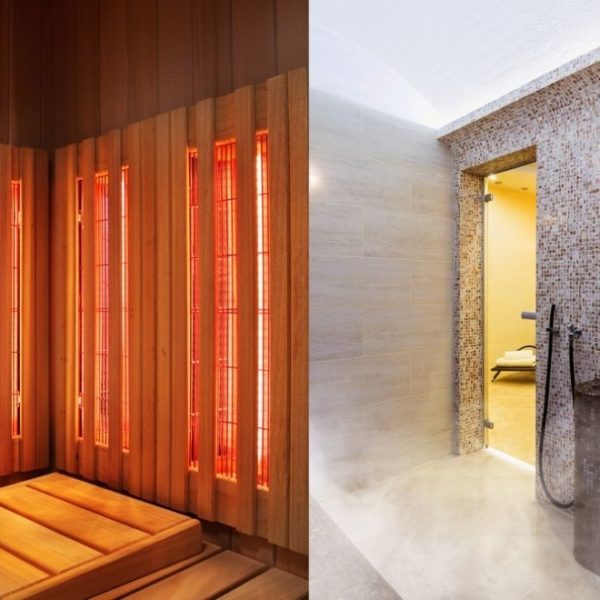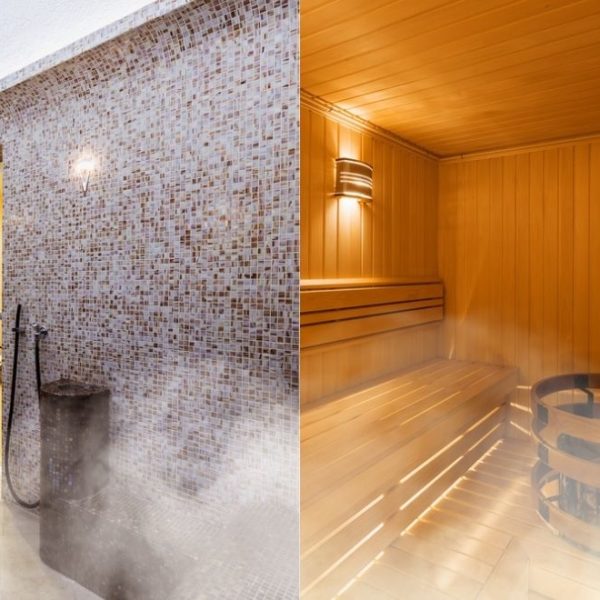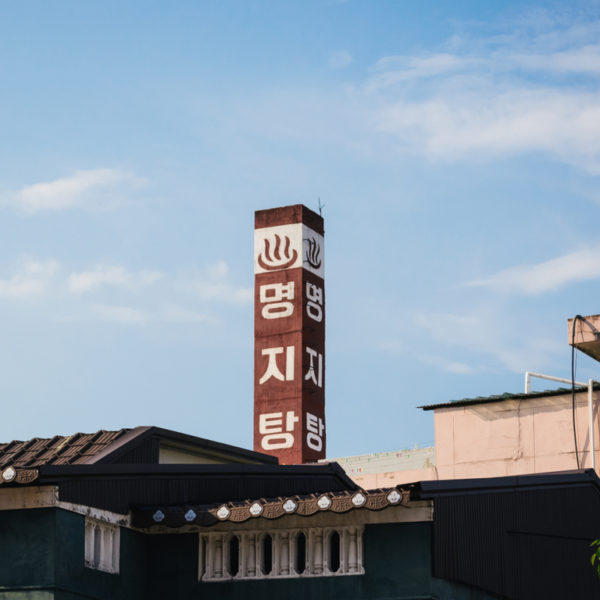If you have acne, then you would do about anything to have clear skin again. Statistically, you are not alone; in America, acne affects up to 50 million people annually.
With continuing study and research, specialists are seeking new and improved treatment methods. These treatments range from natural remedies, over-the-counter ointments, prescription medication to more invasive procedures.
Whether you have mild, moderate, or severe acne, you are likely open-minded enough to try anything that could help. This article will answer your question of whether or not a sauna is good for acne.
Can sauna clear up acne?
Don’t Say the A-word?
Acne is a skin condition that develops when the pores of your skin become obstructed. The obtrusion may occur due to excess oil production, a high number of trapped dead skin cells, or some other bacteria.
Unfortunately, acne can make you feel shy, embarrassed, or self-conscious about your skin and appearance. What’s worse is that there is no sure way to prevent acne; factors out of one’s control, including age, medications, hormones, and family history, typically prompt its onslaught.
Acne pimples are annoying; however, they can cause permanent body scarring, increased anxiety, and even depression in the worst cases. Rather than a simple skin condition, acne is a psychological beast.
Who does it affect
Acne typically attacks teenagers and young adults; no particular group of people is immune from its spoils. In other words, as an adolescent faces millions of other intergalactic-level emotional, physical, mental, and psychological obstacles, they become most vulnerable to be struck with acne.
Adolescent stress is highly volatile, especially for mentally immature people trying to figure life out. Not only are they experiencing puberty, “the time in life when a boy or girl becomes sexually mature,” but they are trying to meet expectations within each of their social circles.
This time in one’s life is far from easy; trust me, I have been through the crucible, and you certainly have as well, unless you are currently riding its white water rapids without a paddle.
If you are going through adolescence currently, and you feel like you are in the middle of the wilderness, I hope to encourage you by saying that ‘there is a light at the end of the tunnel,’ not to sound too cliche.
Levels of Acne
A typical patient is susceptible to various conditions resulting from acne’s psychological, mental, physical, and emotional stress. In other words, one’s internal state of being may or may not be directly proportionate to the level of severity that one’s acne has reached.
There are several scoring systems available for classifying the severity level that an acne patient exhibits. However, professionals have yet to adopt a specific approach across the medical field.
A quantitative scoring system, known as GAGS, is a calculator primarily used to assess a patient’s severity by counting the number of lesions present in the various face, chest, and upper back locations. In addition, specialists may use an assessment for determining an acne patient’s quality of life.
Dermatologists may choose to use a 4-level grading system, but more often than not, they will generally assign an acne patient’s severity level as mild, moderate, or severe.
1. Forms
Acne can take many forms, and it is not unusual for a patient to exhibit several of these forms of acne simultaneously. The National Health Institute classifies acne into the following types:
- whiteheads: obstructed pores that stay under one’s skin producing a white bump externally
- blackheads: obstructed pores that surface to one’s skin and opens up; the appearance is black because the oil within is dirty
- papules: inflamed tender lesions that appear as small pinkish bumps
- pustules or pimples: bumps filled with a white or yellow pus
- nodules: these are larger and quite painful lesions that are deep within the skin
- severe nodular acne (sometimes called cystic acne): deep, painful, pus-filled lesions
2. Mild
In general, you will not have widespread lesions if you have a mild case of acne. Instead, you may have some blackheads, slight bumpiness, and perhaps even some inflammation.
This stage of acne can progress, so it is critical to diagnose and begin over-the-counter or other prescribed treatment as soon as possible.
3. Moderate
At this stage, an acne patient may begin to notice papules or pustules in addition to the bumpy spots and blackheads associated with milder forms.
Over-the-counter medications may no longer be strong enough to contain acne breakouts.
4. Severe
Doctors characterize the severe stage by one’s level of inflammation that intensifies one’s discomfort and painfulness. Generally, the deep-set nodules characteristic of this level of acne leaves scarring. Therefore, an acne patient in this upper range should have a trusted dermatologist closely monitor and prescribe treatments.
Is There a Way Out?
Although acne is not entirely preventable, there are healthy steps you can take to reduce the number of breakouts you experience and the respective severity levels.
If you have been diagnosed with acne, the following healthy lifestyle practices are encouraged:
- correctly understand your skin type so you can make informed skin-product decisions
- stay hydrated
- eat healthy foods (stay away from processed foods and sugars)
- exercise daily
- wash your face twice daily with warm water and a mild cleanser
- do not scrub your skin roughly; gentler is better
- use fragrance-free moistures that are free of pore-clogging ingredients
- do not be a pimple-popper; you increase your risk of permanent scarring
- reduce stress by adopting a mindfulness regimen such as yoga or meditation
- consider light treatments
NOTE: The American Academy of Dermatology Journal recognizes that high-glycemic diets and dairy products may influence diet. Dr. McDougall’s Health & Medical Center reflects that a reversal of acne symptoms is entirely possible with a strictly plant-based diet.
Standard Acne Treatment
You may choose to follow any number of available medical or natural healing remedies to control or prevent your acne. Traditional practitioners have used natural herbal extracts for thousands of years, but many lack endorsement by federal regulatory agencies.
Therefore, although it may cause some healthy debate, I have chosen not to address that argument in this article. Instead, I challenge you to consider suitable alternatives- because, let’s face it, nobody wants to take medication unless it is necessary.
In general, as the severity level increases, your candidacy for stronger medication also increases. Your doctor may even decide to administer a cortisone injection with other meds for inflammation reduction and symptom alleviation.
Are Saunas a Viable Alternative?
Before taking a trip to the steam room, you should discuss the possibilities of sauna therapy with your qualified health professional. More studies are needed to understand if sweat indeed contains the healing properties that could reduce acne symptoms.
The use of saunas over multiple millennia has led researchers to conclude that saunas positively affect the skin. However, before moving further along in our study, we must distinguish between the two main saunas available: traditional steam saunas and infrared saunas.
Traditional Steam Sauna
Traditional steam saunas remain true to their name; they pour heated water over stones to generate steam within the sauna enclosure to create a hot and humid atmosphere.
These saunas can often operate at temperatures reaching 200 degrees Fahrenheit, designed to be hot to generate sweat. The benefits of traditional steam saunas are far-reaching, so far that in Finland, their use has become synonymous with their national culture.
Can you believe that out of 5.5 million people, reports indicate that there are 3.3 million saunas in circulation. That is an incredible statistic!
Infrared Sauna
Infrared saunas emit heat that directly penetrates one’s skin using various wavelengths of electromagnetic radiation to target specific issues ranging from topical skin conditions to deeper and more concentrated medical problems.
Specific issues may be better targeted by far-infrared, whereas others may benefit from near-infrared saunas. Scientists measure near and far-infrared wavelengths in nanometers– for the healing of acne lesions, the optimal delivery level is 880 nm.
A Japanese doctor first patented the lamp technology associated with infrared saunas. The use of infrared saunas in Waon Therapy has shown improvements in patients with congestive heart failure and peripheral artery disease.
Traditional vs. Infrared
Both traditional and infrared saunas include a long list of benefits; however, targeted research lends to the fact that infrared saunas more effectively reach deep tissue conditions.
Even at much lower operating temperatures, typically between 110 and 140 degrees Fahrenheit, infrared saunas produce deep penetrating heat that affects you at the molecular level.
More specifically, infrared light stimulates mitochondria, the powerhouse of the cell. The ATP produced serves as a carrier for the newly stimulated and synthesized energy, then used during energy-consuming activities.
Clearlight states, “when targeted infrared light penetrates the skin, your body transforms this light into an enzyme that invigorates and regenerates the growth of skin cells.”
A popular home option for infrared therapy is acquiring a sauna blanket, although it is unpractical for facial acne. And while a trip to the infrared sauna sounds like a nice escape, in addition to its healing properties, you may potentially have an infrared enclosure installed at home.
Do Saunas Help Acne?
We said earlier that at its most basic form, acne is a skin condition that develops due to an obstruction of one’s skin pores. The oils produced by your skin’s sebaceous glands are known as sebum.
There are obvious connections between the fact that one’s face contains “as many as 900 sebaceous glands per square centimeter of skin” and that acne patients most commonly experience lesions on their face.
Although several factors can complicate acne, evidence has shown an elevated level of sebum when acne is present. Therefore as sebum production increases, an individual is more susceptible to acne lesions.
Research has shown that sweat contains antimicrobial properties among other globally recognized healing properties. “Not only has dermcidin proven to actively kill P. acnes, but research has also tied the presence of acne to the decreased expression of dermcidin in sweat.”
I’m confident that you will not mind investing some additional time to watch this video that addresses the healing powers associated with sweating by this point.
Although sweat gets a negative connotation in many cultures, it is highly beneficial and serves as a release mechanism for our bodies. The Wiseman Family Practice is comfortable enough in its belief to call our bodies “our third kidney,” the toxin-filtering organ.
After watching what Dr. Joy Hussein had to say, maybe routine sauna use could limit the overgrowth of the bacteria, known as propionibacterium acnes, linked to the cause of the acne skin disease in the first place.
Tips for Proper Sauna Use
If your acne specialist has medically cleared you to undergo sauna therapy for your acne, then they will indeed mention the following tips:
- only frequent a reputable sauna and always request the most recent cleaning cycle; cleanliness is KEY in the prevention and treatment of acne
- be sure to clean your skin before entering the sauna so that your sweat can adequately leave your pores
- stay hydrated throughout your sauna experience; remember dehydration negatively affects acne lesions
- use the sauna for short periods; just enough time for the sweat-activated to naturally remove bacteria and sebum
- after you get out of the sauna, be sure not to let the sweat dry on your skin; take a cool shower to remove any lingering dirt or oils
If used correctly and under your specialist’s guidance, you can walk out of the sauna feeling and looking more healthy and confident.
Conclusion
If you have acne, a vital component to your healing and treatment plan lies in the trust relationship established with your skincare specialist. From the first signs of noticeable skin blemishes, a quick evaluation will help you be proactive in kicking the symptoms.
Suppose you do not have any other limiting health conditions and are a candidate for sauna therapy. In that case, I sincerely hope that you will reap several of the associated skin benefits with taking a trip to the infrared sauna.
Would you mind sharing any questions or concerns below regarding your acne journey? Also, be sure to include any experiences you have had using sauna therapy as part of your treatment.
